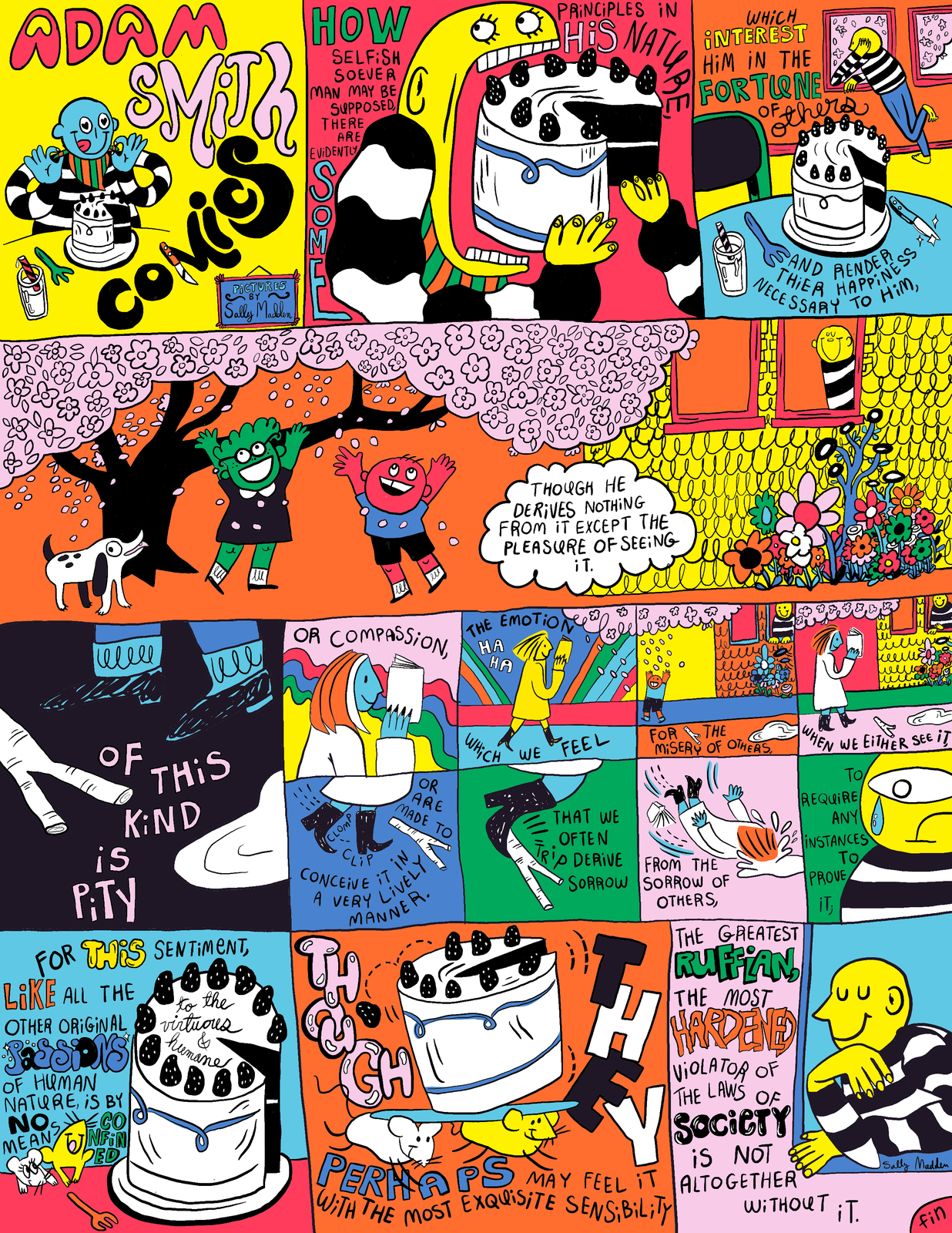Adam Smith Comics: How The Theory of Moral Sentiments Begins
July 11, 2023

"How selfish soever man may be supposed, there are evidently some principles in his nature, which interest him in the fortune of others..." Thus, Adam Smith beings his Theory of Moral Sentiments and artist Sally Madden shows us another way to see it.

"How selfish soever man may be supposed, there are evidently some principles in his nature, which interest him in the fortune of others..." Thus, Adam Smith beings his Theory of Moral Sentiments and artist Sally Madden shows us another way to see it.
The beginning of Adam Smith's The Theory of Moral Sentiments has grand statements, careful language, and a hardened ruffian to consider. Artist Sally Madden gives a colorful and humorous window into one of the most fundamental Smithian axioms.
How selfish soever man may be supposed, there are evidently some principles in his nature, which interest him in the fortune of others, and render their happiness necessary to him, though he derives nothing from it except the pleasure of seeing it. Of this kind is pity or compassion, the emotion which we feel for the misery of others, when we either see it, or are made to conceive it in a very lively manner. That we often derive sorrow from the sorrow of others, is a matter of fact too obvious to require any instances to prove it; for this sentiment, like all the other original passions of human nature, is by no means confined to the virtuous and humane, though they perhaps may feel it with the most exquisite sensibility. The greatest ruffian, the most hardened violator of the laws of society, is not altogether without it.

Another take on this foundational quotation by artist Paula Richey and editor Jeremy Lott can be found here: The Opening of The Theory of Moral Sentiments
More on Smithian Sympathy?
Edward J. Harpham's Sympathy, Fellow-Feeling, and the Imagination
Lauren Hall's Adam Smith, Sympathy, and Spontaneous Social-Moral Order